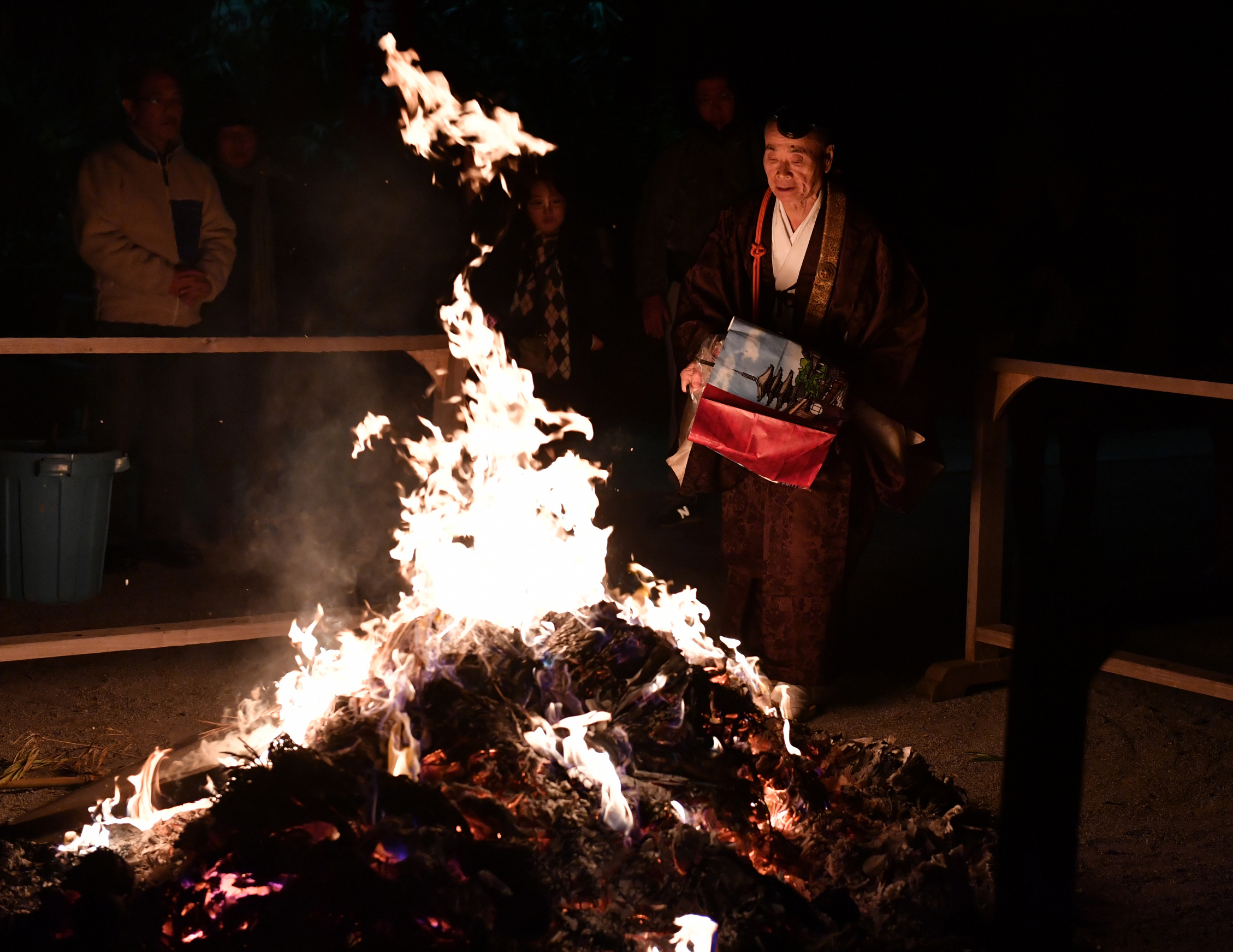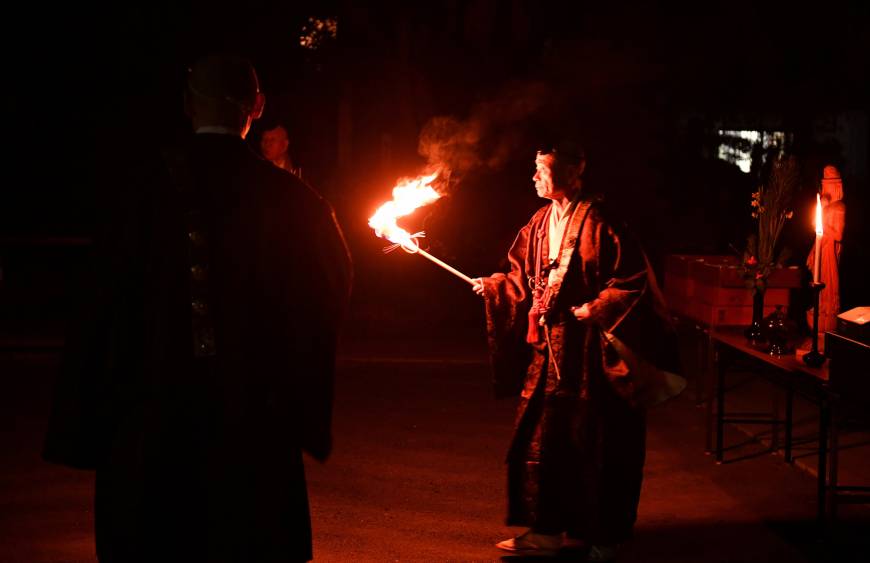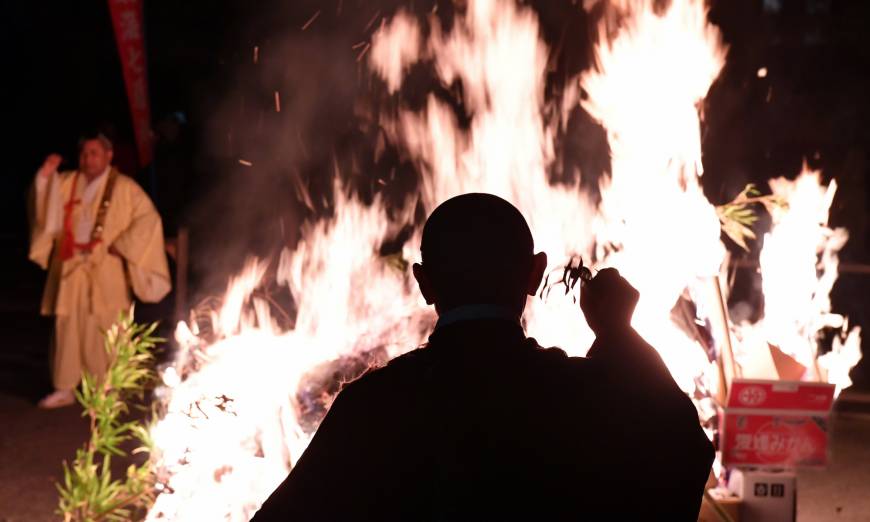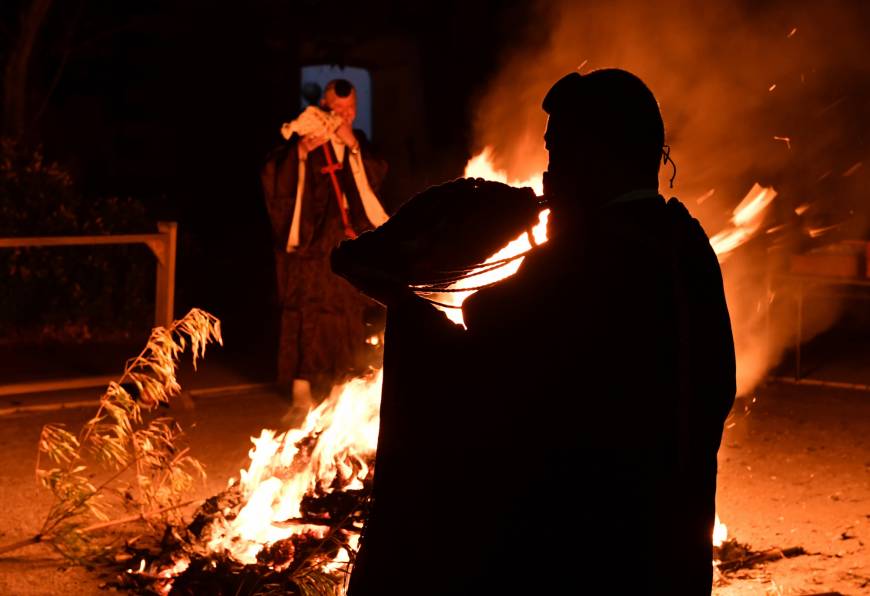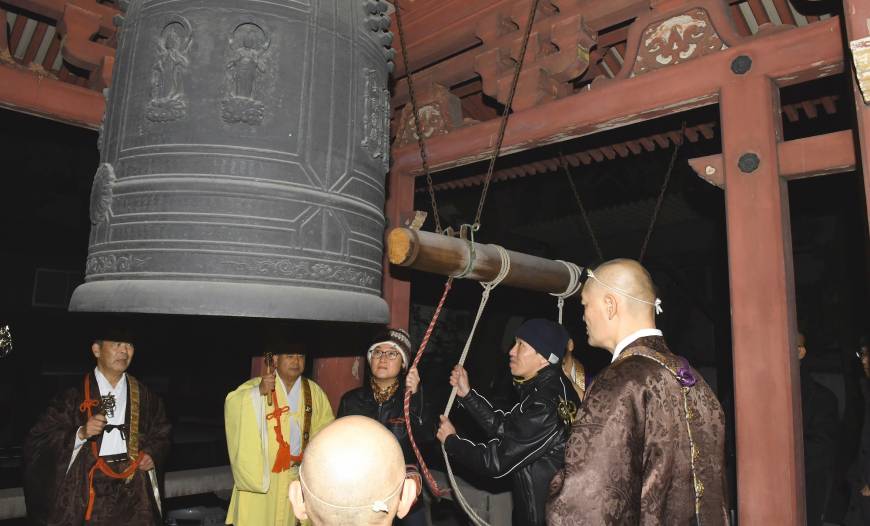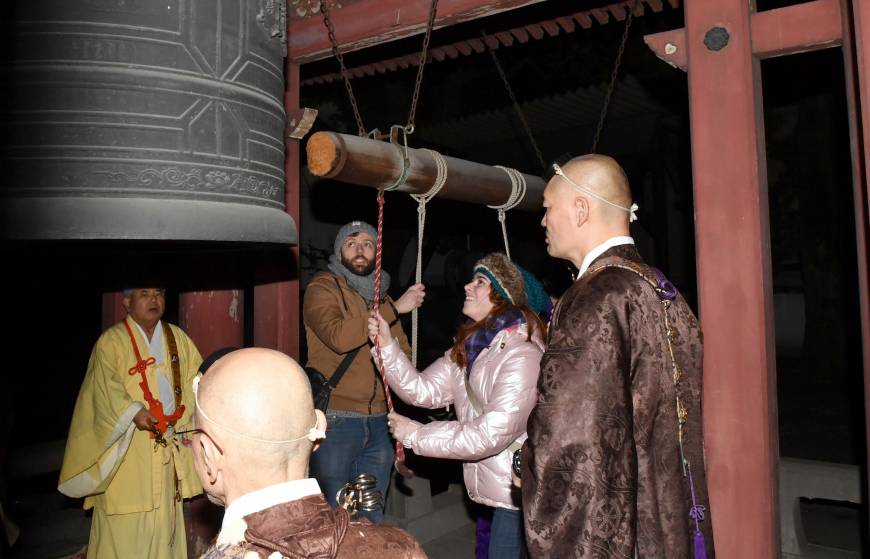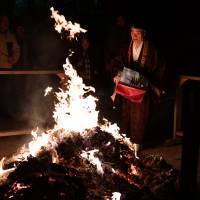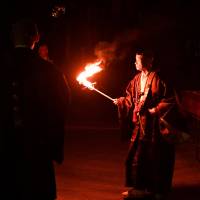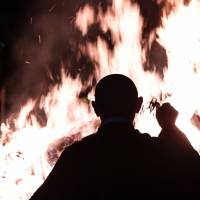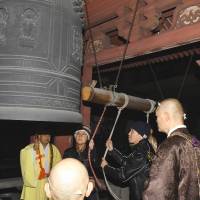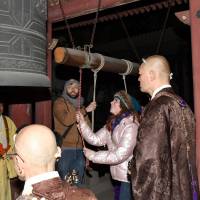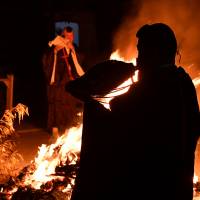On Sunday, people across Japan marked the passing of 2017 and the arrival of the new year at temples and shrines, both big and small.
While the evening of oshōgatsu is celebrated in numerous ways, for many it is a time for spiritual purification and prayer spent with family and friends.
Temple visitors traditionally pray at the temple altar after giving a small donation and buy paper fortunes (omikuji) and talismans (omamori) for the coming year at temple-run stalls.
As is customary at many temples, visitors to Honsenji Temple in Tokyo’s Shinagawa Ward brought lucky charms and decorations from the previous year to be burned at a rite called otakiage overseen by the temple monks.
Another annual ritual is joya no kane — the traditional ringing of the temple bell 108 times. According to Buddhist beliefs, the ringing represents the process of ridding mankind of worldly desires that have accumulated over the year.
At some temples, visitors can line up and get a chance to bong the bell with a large wooden pillar.



